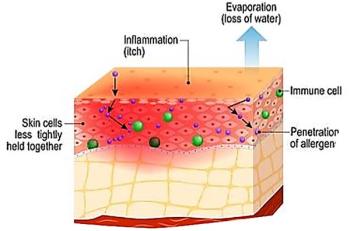
The Evolving Role of Inhaled Corticosteroids in COPD
Q:What is the latest thinking on the use of dailyinhaled corticosteroids in the managementof chronic obstructive pulmonary disease (COPD)?
Q:What is the latest thinking on the use of dailyinhaled corticosteroids in the managementof chronic obstructive pulmonary disease (COPD)?A:Although inhaled corticosteroids are the cornerstoneof maintenance therapy for moderate tosevere asthma, their use in COPD is controversial. Severalprospective, randomized, controlled clinical trials haveshown that inhaled corticosteroids do not significantlyslow the long-term progressive decline in forced expiratoryvolume in 1 second (FEV1) in patients with COPD.1-4Inflammatory mechanisms are part of the pathogenesisof both asthma and COPD; however, different cellularmediators and inflammatory cytokines are involved inthe two diseases. Nevertheless, systemic corticosteroidsare useful in severe exacerbations of COPD.5New evidence. More recent trials provide fairly compellingevidence that inhaled corticosteroids reduce thenumber and severity of exacerbations of both mild COPD2,3and moderate to severe disease (ie, FEV1 less than 50% ofpredicted).1 In one study, medium-or high-dose inhaledcorticosteroid therapy was associated with a significant reductionin mortality.6 In another study, the combinationof fluticasone and salmeterol was associated with decreasedmortality in patients with advanced COPD.7 Because ofthese new data, it is likely that the FDA will approve an indicationfor the use of fluticasone or the combination offluticasone and salmeterol as maintenance therapy inCOPD.Safety caveats. Inhaled corticosteroids may have systemicside effects. For example, the investigators in theLung Health Study found that triamcinolone was associatedwith reduced bone mineral density.2 (Other studies,however, have not shown this effect.8) In elderly patients,long-term use of high-dose inhaled corticosteroids hasbeen associated with cataracts.9 As with all corticosteroids,prescribe inhaled formulations only for specific indicationsand monitor patients regularly for adverse effects.The bottom line. Inhaled corticosteroids may beconsidered for long-term management in selected patients with moderate to severe COPD. However, these formulationsare not indicated for severe acute exacerbations ofCOPD because they are ineffective against peribronchialinflammation. Systemic corticosteroids are recommendedin this setting.
References:
REFERENCES
1.
Burge PS, Calverley PM, Jones PW, et al. Randomised, double blind, placebocontrolled study of fluticasone propionate in patients with moderate to severechronic obstruction pulmonary disease: the ISOLDE trial.
BMJ
. 2000;320:1297-1303.
2.
The Lung Health Study Research Group. Effect of inhaled triamcinolone onthe decline in pulmonary function in chronic obstructive pulmonary disease.
N Engl J Med
. 2000;343:1902-1908.
3.
Paggiaro PL, Dahle R, Bakran I, et al. Multicentre randomised placebo-controlledtrial of inhaled fluticasone propionate in patients with chronic obstructivepulmonary disease. International COPD Study Group.
Lancet
. 1998;351:773-780.
4.
Pauwels RA, Lofdahl CG, Laitinen LA, et al. Long-term treatment with inhaledbudesonide in persons with mild chronic obstructive pulmonary disease whocontinue smoking. European Respiratory Society Study on Chronic ObstructivePulmonary Disease.
N Engl J Med
. 1999;340:1948-1953.
5.
Singh JM, Palda VA, Stanbrook MB, Chapman KR. Corticosteroid therapy forpatients with acute exacerbations of chronic obstructive pulmonary disease: asystematic review.
Arch Intern Med
. 2002;162:2527-2536.
6.
Sin DD, Man SF. Inhaled corticosteroids and survival in chronic obstructivepulmonary disease: does the dose matter?
Eur Respir J
. 2003;21:260-266.
7.
Soriano JG, Vestbo J, Pride NB, et al. Survival in COPD patients after regularuse of fluticasone propionate and salmeterol in general practice.
Eur Respir J
.2002;20:819-825.
8.
Sharma PK, Malhotra S, Pandhi P, Kumar N. Effect of inhaled steroids onbone mineral density: a meta-analysis.
J Clin Pharmacol
. 2003;43:193-197.
9.
Garbe E, Suissa S, LeLorier J. Association of inhaled corticosteroid use withcataract extraction in elderly patients.
JAMA
. 1998;280:539-543.
Newsletter
Enhance your clinical practice with the Patient Care newsletter, offering the latest evidence-based guidelines, diagnostic insights, and treatment strategies for primary care physicians.































































































































































































































































































































